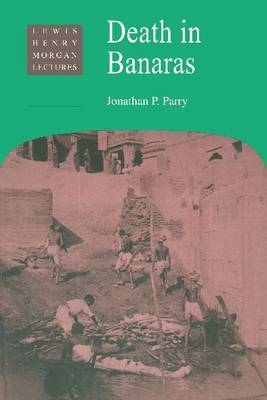
Death in Banaras
Seiten
1994
Cambridge University Press (Verlag)
978-0-521-46625-7 (ISBN)
Cambridge University Press (Verlag)
978-0-521-46625-7 (ISBN)
The Indian city of Banaras attracts pilgrims and mourners from across the Hindu world. It is a place to die, to dispose of the physical remains of the deceased, and to perform various mortuary rites. This book is about the various sacred specialists who serve the dead: how they organise their business, represent death, and interpret the rituals over which they preside.
As a place to die, to dispose of the physical remains of the deceased and to perform the rites which ensure that the departed attains a 'good state' after death, the north Indian city of Banaras attracts pilgrims and mourners from all over the Hindu world. This book is primarily about the priests and other kinds of 'sacred specialists' who serve them: about the way in which they organise their business, and about their representations of death and understanding of the rituals over which they preside. All three levels are informed by a common ideological preoccupation with controlling chaos and contingency. The anthropologist who writes about death inevitably writes about the world of the living, and Dr Parry is centrally concerned with concepts of the body and the person in contemporary Hinduism; with ideas about hierarchy, renunciation and sacrifice, and with the relationship between hierarchy and notions of complementarity and holism.
As a place to die, to dispose of the physical remains of the deceased and to perform the rites which ensure that the departed attains a 'good state' after death, the north Indian city of Banaras attracts pilgrims and mourners from all over the Hindu world. This book is primarily about the priests and other kinds of 'sacred specialists' who serve them: about the way in which they organise their business, and about their representations of death and understanding of the rituals over which they preside. All three levels are informed by a common ideological preoccupation with controlling chaos and contingency. The anthropologist who writes about death inevitably writes about the world of the living, and Dr Parry is centrally concerned with concepts of the body and the person in contemporary Hinduism; with ideas about hierarchy, renunciation and sacrifice, and with the relationship between hierarchy and notions of complementarity and holism.
Introduction; Part I. Death and the City: 1. Through 'divine eyes'; 2. A profane perspective; Part II. Death as a Living: 3. Shares and chicanery; 4. Giving, receiving and bargaining over gifts; Part III. Death into Birth: 5. The last sacrifice; 6. Ghosts into ancestors; 7. Spirit possession as 'superstition'; Part IV. The End of Death: 8. Asceticism and the conquest of death.
| Erscheint lt. Verlag | 7.7.1994 |
|---|---|
| Reihe/Serie | Lewis Henry Morgan Lectures |
| Vorwort | Anthony T. Carter |
| Zusatzinfo | 9 Tables, unspecified; 6 Maps; 12 Halftones, unspecified |
| Verlagsort | Cambridge |
| Sprache | englisch |
| Maße | 152 x 229 mm |
| Gewicht | 510 g |
| Themenwelt | Geisteswissenschaften ► Religion / Theologie ► Hinduismus |
| Sozialwissenschaften ► Ethnologie | |
| Sozialwissenschaften ► Soziologie ► Mikrosoziologie | |
| ISBN-10 | 0-521-46625-3 / 0521466253 |
| ISBN-13 | 978-0-521-46625-7 / 9780521466257 |
| Zustand | Neuware |
| Haben Sie eine Frage zum Produkt? |
Mehr entdecken
aus dem Bereich
aus dem Bereich
Worshipping the Eternal Mother at a North American Hindu Temple
Buch | Hardcover (2024)
Oxford University Press Inc (Verlag)
CHF 136,00


